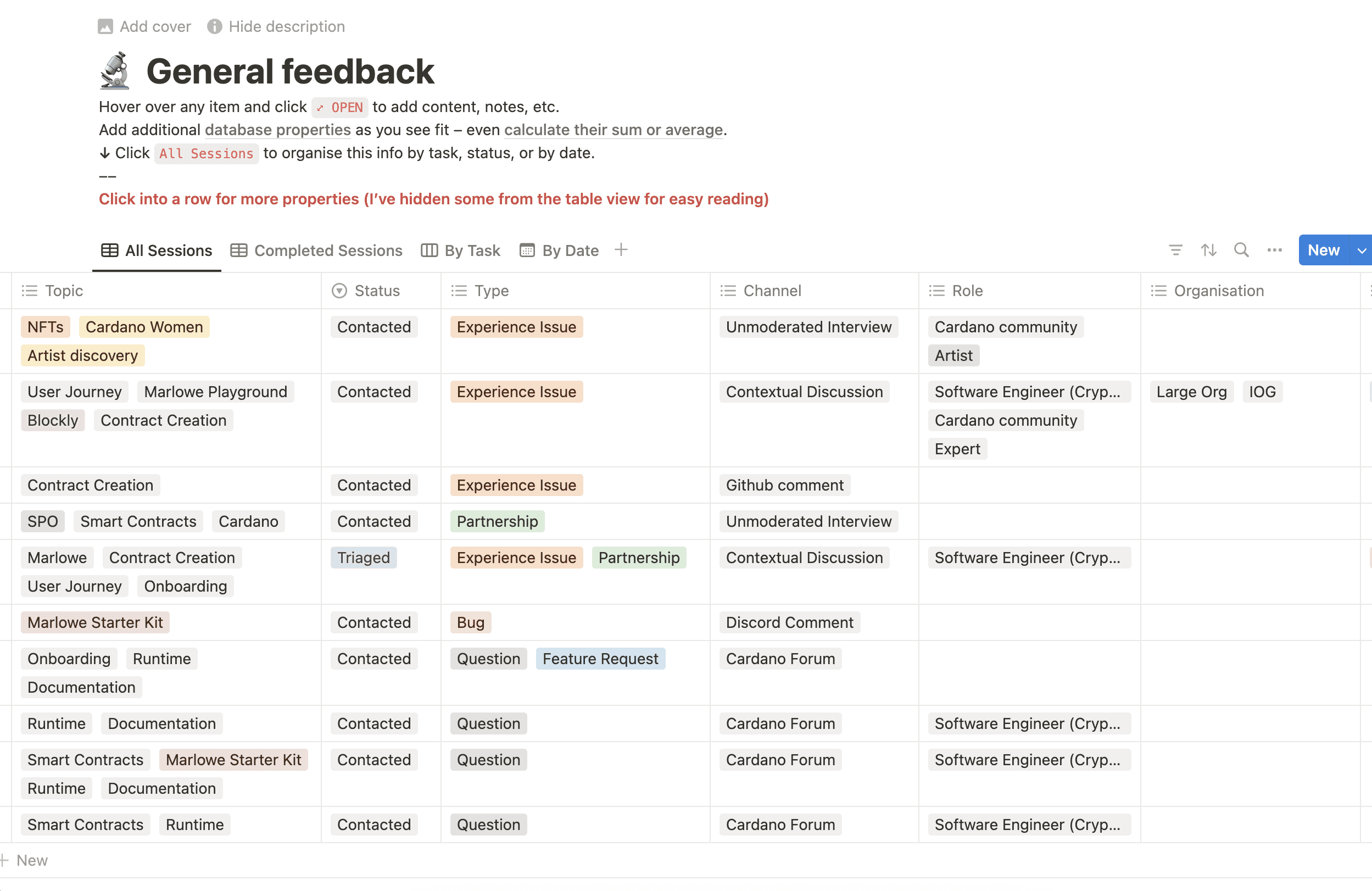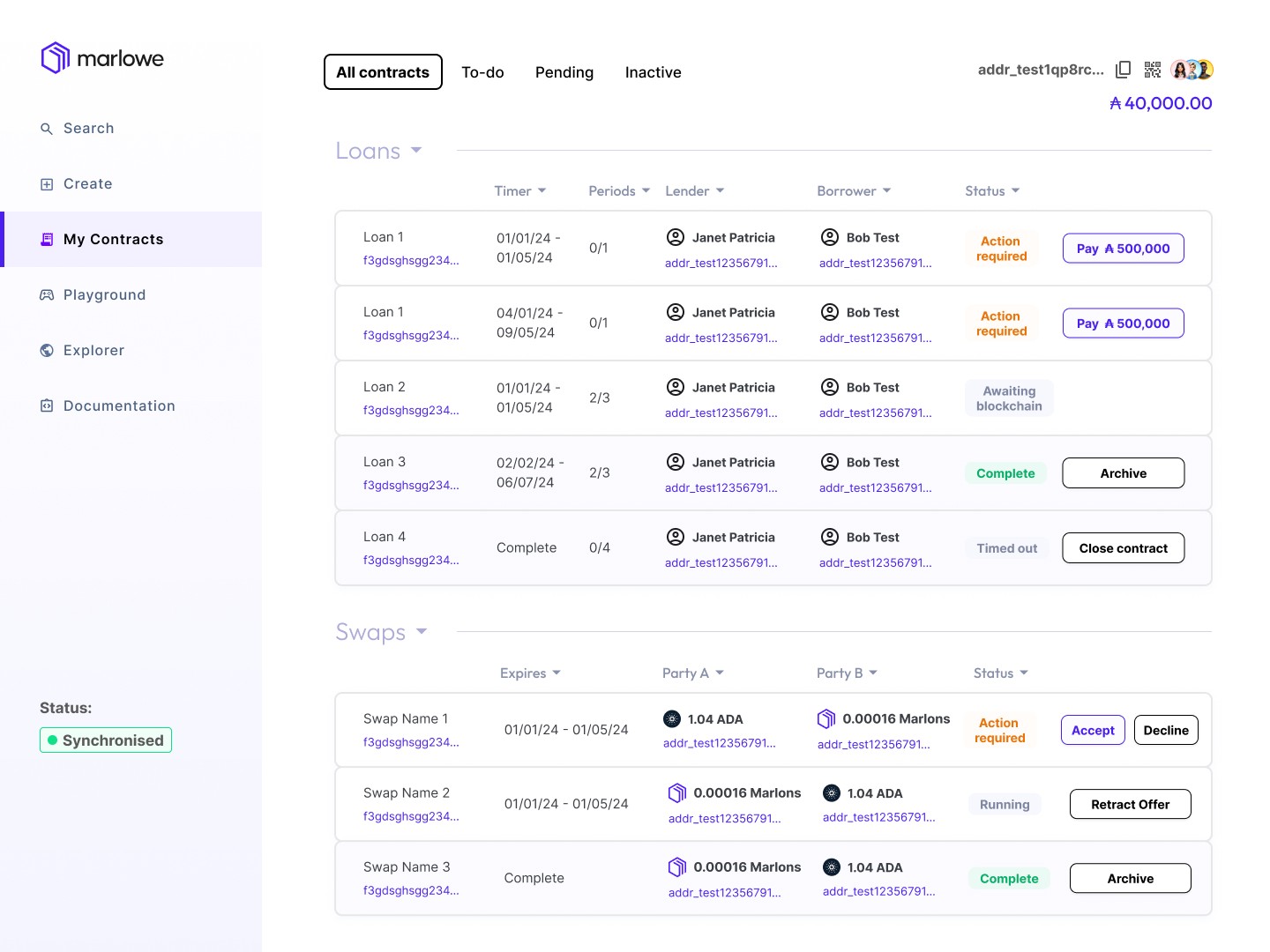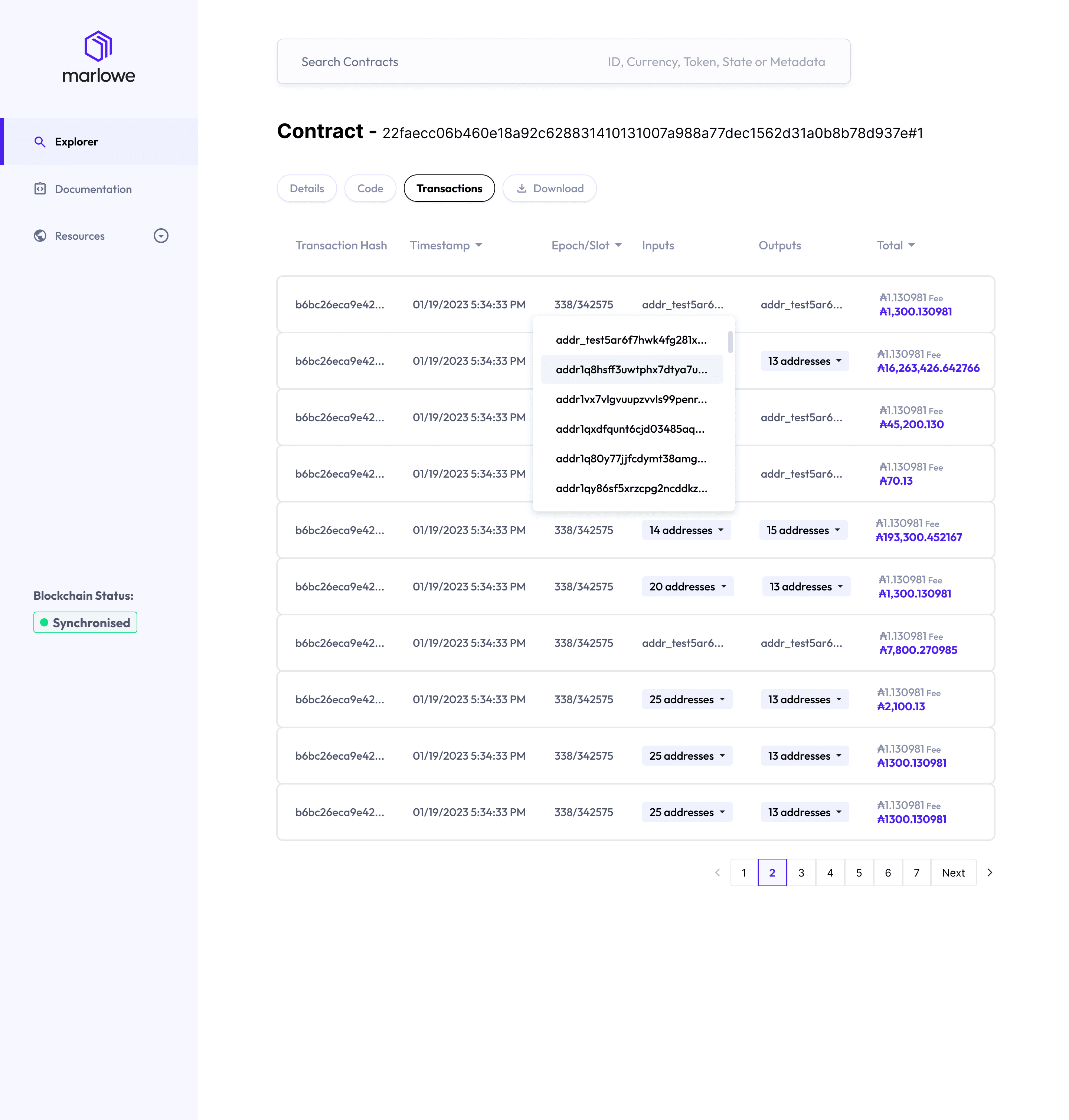Marlowe
The company
Founded in 2015 by Charles Hoskinson and Jeremy Wood, IOHK is one of the world's pre-eminent blockchain infrastructure research and engineering companies. A fully decentralized organisation committed to the highest principles of academic rigour and evidence-based software development. The company builds high-assurance blockchain infrastructure solutions for public, private sector and government clients. It is also the driving force behind the decentralized and smart contract platform, Cardano.
As a UX designer, I led the research and design for several key components of the Marlowe ecosystem, applying a design thinking methodology throughout each project. The projects included a block explorer for Cardano with a focus on Marlowe, a low-code smart contract development platform for Marlowe, various low-code prototypes including token gating and vesting, and a marketing site for Marlowe. This case study details the process, challenges, and outcomes of each project.
Initial research
Our top priority from the start had been to consistently enhance the user experience by closely monitoring developer interactions and pinpointing their challenges. To achieve this, we dedicated time to comprehensively understand developer behavior with the product through remote testing sessions. Additionally, we engaged with developers outside the product environment to discuss their coding and debugging strategies, allowing us to gain insight into the typical workflow of an average smart contract developer.
Design thinking led UX
Effective research and design thinking were instrumental in enhancing the user experience of our product suite. By prioritizing intuitive design, we managed to simplify complex processes, making it easier for developers to navigate and use the platforms. Comprehensive user research, including interviews and usability testing, allowed us to identify the specific needs and pain points of our target audience, which guided our design decisions.
Incorporating features like drag-and-drop functionality, pre-built templates, and interactive tutorials, we streamlined the onboarding process. Continuous feedback and iterative design ensured the platforms remained responsive to the evolving needs of developers. This approach not only improved usability but also facilitated the successful onboarding of thousands of developers.



All-In-One Personal Contract Explorer Platform
For the all-in-one personal contract explorer platform, the goal was to create a tool that allows users to easily track and manage the smart contracts they have interacted with. We conducted user research through interviews and surveys to understand their needs for managing personal contracts. Key requirements included viewing contract history, tracking contract status, and receiving notifications about updates.
The ideation phase focused on designing an intuitive interface that consolidated all user interactions with contracts in one place. Prototypes were created and tested iteratively with users, incorporating their feedback to enhance usability and functionality. The final product would enable users to seamlessly track and manage their smart contracts, providing a comprehensive and personalized contract management experience within the Marlowe ecosystem.


Block Explorer
The project began with extensive user research, including interviews and surveys with developers, financial analysts, and blockchain enthusiasts. This research helped identify user needs such as tracking Marlowe transactions, viewing detailed contract information and analyzing blockchain metrics. After brainstorming design concepts, we developed interactive prototypes that underwent multiple rounds of testing. The final product was an intuitive block explorer that provided users with a seamless experience for tracking and analyzing blockchain data specific to Marlowe.

Low-Code Smart Contract Development Platform for Marlowe
Understanding the needs of developers was crucial, so we conducted workshops and usability tests with developers of varying skill levels. The goal was to design a platform that simplified smart contract creation with features like drag-and-drop functionality, pre-built templates, and interactive tutorials. Through iterative prototyping and user feedback, we refined the platform to ensure it was both functional and user-friendly. The resulting platform empowered developers to create and deploy smart contracts with ease, significantly lowering the barrier to entry.

Low-Code Prototypes: Token Gating and Vesting
Research involved engaging with potential users to understand their specific needs for token gating and vesting solutions. We designed low-code prototypes that offered robust functionality while being easy to use, incorporating customizable token gating rules and flexible vesting schedules. User feedback during testing helped refine these prototypes, resulting in effective and accessible solutions that enhanced our Marlowe ecosystem.
Marketing Site for Marlowe
User research included interviews with potential users and stakeholders to understand the target audience. The marketing site needed to be visually appealing, informative, and user-friendly. By brainstorming various layouts and visual styles, we created a prototype that was tested and refined based on user feedback. The final marketing site effectively communicated Marlowe’s benefits, attracting and informing potential users and contributing to its growth and adoption.

Conclusion
Through a structured design thinking approach, each project within the Marlowe ecosystem was carefully researched, designed and tested to meet user needs effectively. The user-centered design process resulted in intuitive, functional and engaging tools that enhanced the user experience and supported the open-source growth of Marlowe.
